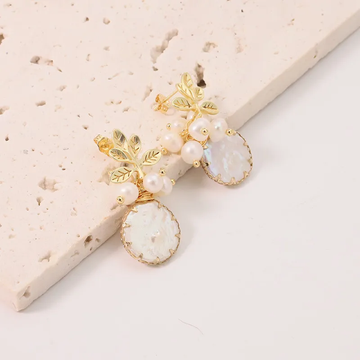The cleaning methods for different types of stone bracelets vary significantly. Here is a detailed analysis:
Jade bracelets (such as Hetian jade, jadeite
Cleaning agent selection: Mild soapy water or neutral detergent should be used. For example, put the bracelet in a bowl filled with warm water and a few drops of soap, and gently wipe the surface with a soft cloth or brush.
Avoid chemicals: Do not use any cleaning agents containing chemicals, as these chemicals may cause damage to jade. At the same time, it is also necessary to avoid contact with items containing chemical components such as perfume, cosmetics and detergent.
Cleaning force: When cleaning, be gentle and avoid excessive force. For bracelets with carvings or textures, extra care should be taken during cleaning to prevent damage to the carving details. For example, gently brush the engraved area with a soft-bristled brush to avoid the bristles getting stuck in the engraved gaps and causing damage.
Subsequent maintenance: After cleaning, a small drop of olive oil or vegetable oil can be evenly applied to the surface of the jade, and then gently wiped with a soft cloth to maintain its luster.
Porous gemstone bracelets (such as turquoise and lapis lazuli)
Cleaning method: This type of gemstone is prone to absorbing moisture and stains. Do not use liquid cleaners when cleaning. The gemstone can be placed in dry coarse salt to remove stains by the adsorption effect of the coarse salt. However, it should be noted that the operation time should not be too long to avoid damaging the gemstone.
Daily protection: It should be kept away from water, sweat and other liquids in daily life to prevent stains from penetrating.
Organic gemstone bracelets (such as pearls and corals)
Cleaning tools: Gently rub with a clean and soft damp cloth to remove surface dirt and grease, and wipe it clean.
Cleaning contraindications: Do not soak or wash with detergent, and do not wear it when taking a bath to avoid contact with chemicals. When placing it, do not put it near items with chemical components such as perfume, nail polish or hair spray to avoid chemical damage.
Colored gemstone bracelets (such as rubies, sapphires, tourmalines, garnets, crystals, etc.)
Cleaning agent selection: Mild soapy water and a soft-bristled brush can be used for cleaning. For example, immerse the bracelet in warm water mixed with an appropriate amount of neutral detergent, gently scrub it with a toothbrush, then rinse it clean with warm water, and finally dry it with a soft cotton-free flannel cloth.
Special gemstone precautions: Be extremely careful when cleaning peridot as it is rather brittle and prone to cracking when exposed to heat. It is also susceptible to acid corrosion. When wearing it, be extremely cautious and never clean it with acid. Opal is a gemstone with a relatively high water content. It is afraid of drying out and losing water and should be stored in a humid environment or frequently soaked in clean water. Turquoise jewelry is water-absorbent and can absorb grease. Once it absorbs grease, it will affect its quality. Therefore, when applying sunscreen or lotion on your body, do not wear turquoise jewelry. Quartz should be kept away from radioactive substances and heat sources. It will change color under the irradiation of radioactive substances. Amethyst may become lighter in color when heated. Tourmaline has thermoelectric properties. When exposed to sunlight or heat, it generates static electricity and attracts some fine dust. Therefore, tourmaline should be kept away from overheating.







